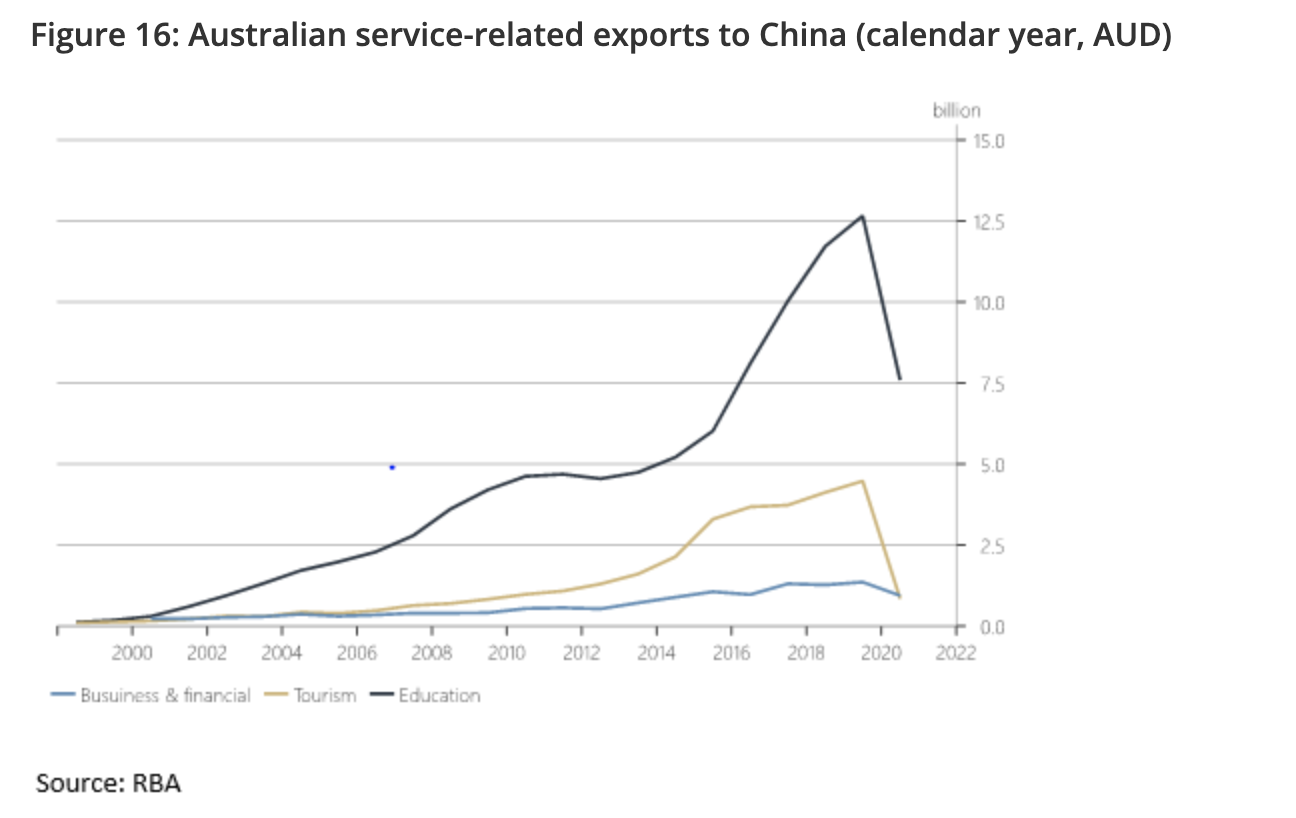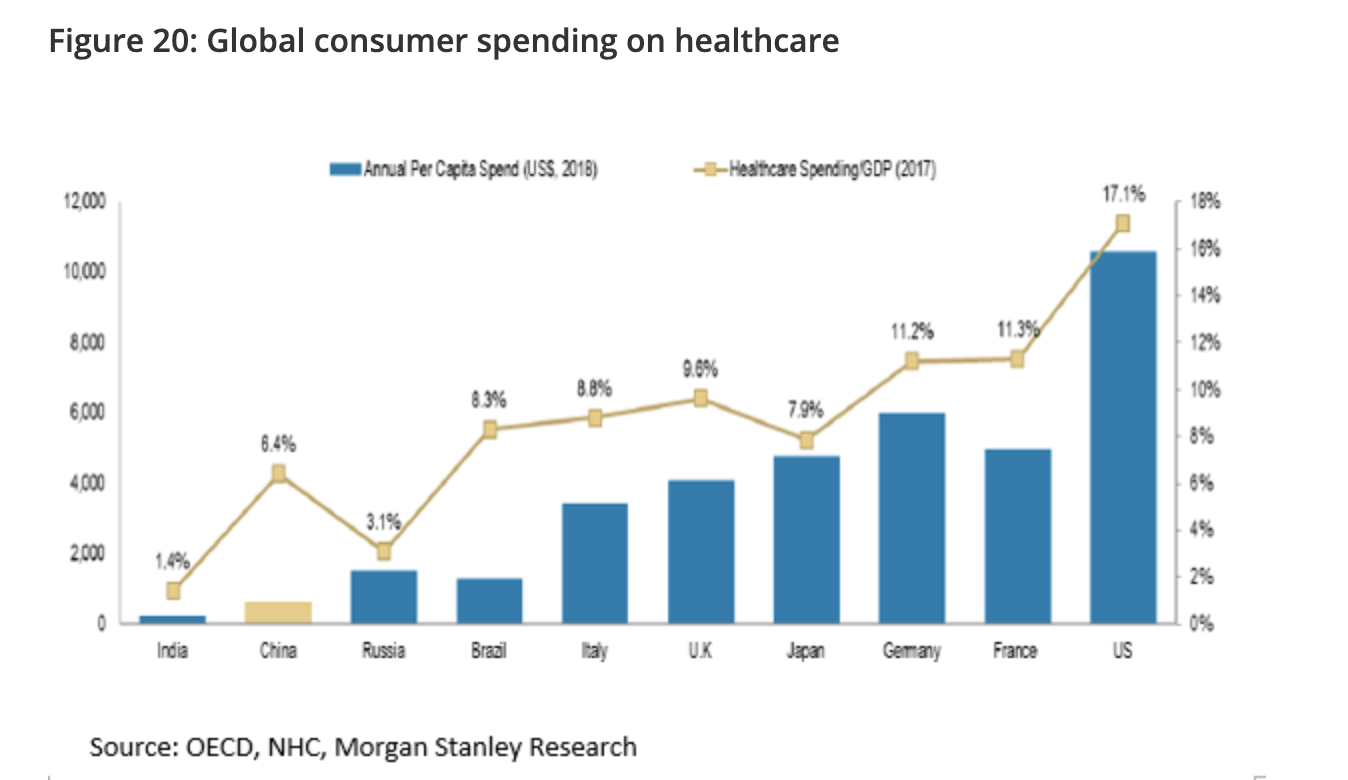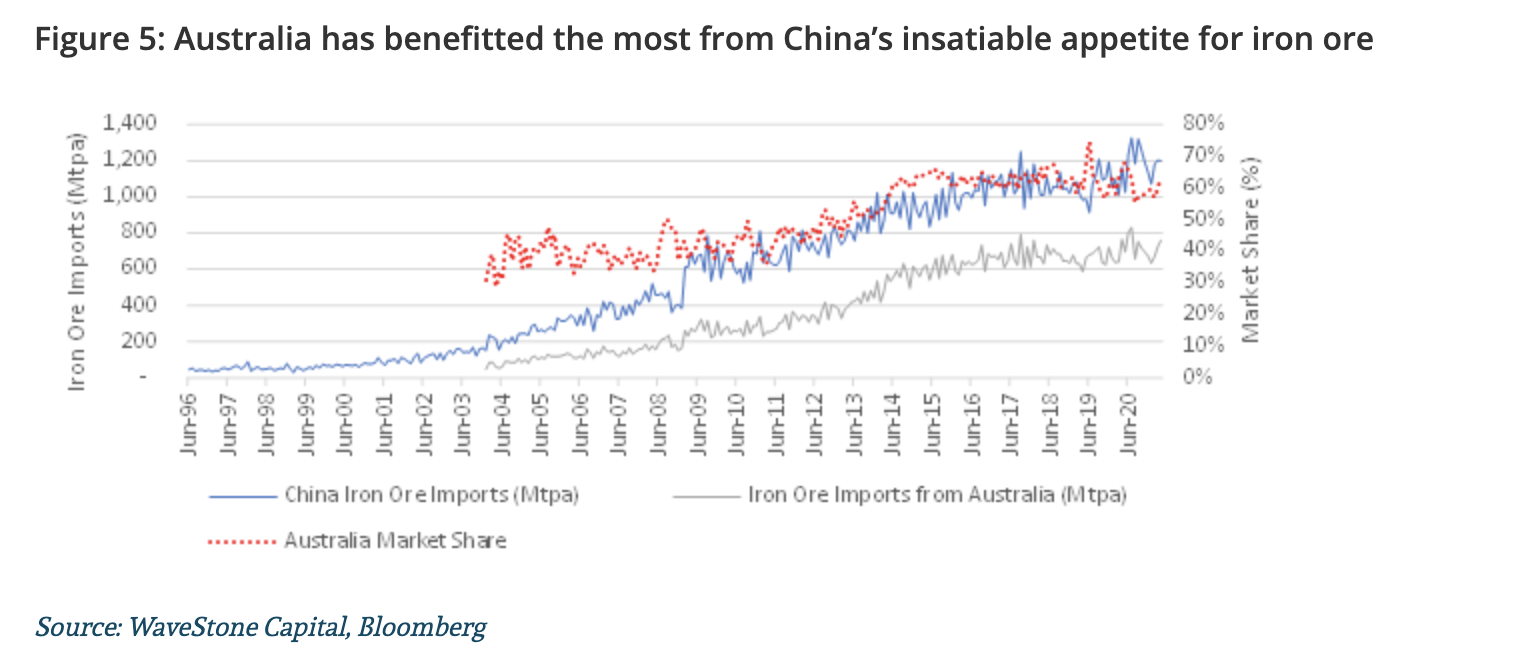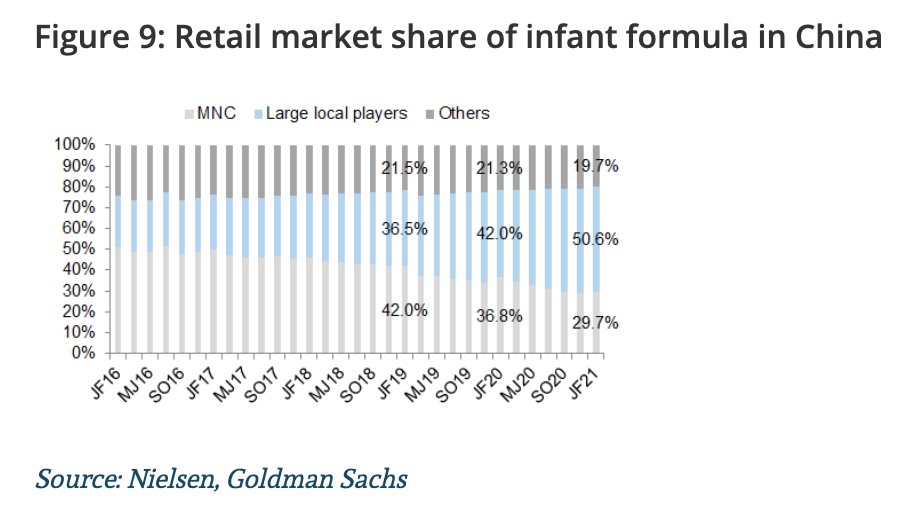Be long what China is short. Be short what China is long
The Chinese market presents an enigma for businesses: On one hand, the sheer size of the population is an enticing prospect as it gradually grows wealthier. On the other, a rampaging political and regulatory landscape has recently triggered material volatility across local giants in Tencent and Alibaba - not to mention the perpetual uncertainty for foreign businesses.
When Australians think about our exports to China the first things that come to mind are probably iron ore, infant formula, beef and Ugg boots. While these areas are strong and growing (well, aside from infant formula maybe), a more powerful middle class are demanding a wider breadth of product offerings.
Accordingly, Australian companies are in a perfect position to capitalise on this growth - as long as they heed important lessons.
"Companies can no longer assume that merely being of foreign origin will lead to Chinese consumers placing a quality premium on the product... To succeed requires adapting to the changing regulatory environment and evolving consumer preferences."
WaveStone Capital recently published a 3-part report covering how Australian businesses can participate in the shifting Chinese economy. In this wire, I summarise these and cover the key demographic trends driving increased demand, key considerations when looking at commodity exports and finally the ASX-listed companies with the potential to flourish.

The opportunity set is both deepening and broadening
China has undoubtedly been one of our key trading partners over the last decade. Their consumption has been focused around a select basket of products, but they are now widening this demand for our goods and services even further as they pursue their goal of becoming a prosperous "high income" country by 2049.
"As investors, we aim to identify companies that can sustainably benefit from consumer growth, especially the potential doubling of the size of the consumption market to $17 trillion by 2030, which is similar to the current size of the US market."
Consumers opening their purses is a key wave that investors are looking to ride. The current consumption rate in China of 49% is notably lower compared to the USA's 65%. This tendency to save has been induced by the traditional lack of social security measures in place, however WaveStone expect the Chinese government to develop such mechanisms as well as social services like healthcare, "reducing the need for precautionary savings and helping unleash the power of the consumer."
Furthermore, demand for Australian services such as tourism and education are estimated to normalise once borders reopen. Education particularly is pertinent as the working population falls and automation and technology reduces the need for manual labour, likely benefitting companies such as IDP Education (ASX:IEL).

Contributing to this is the country's ageing population which is fuelling demand for Australian healthcare offerings. Consistent with general expenditure, healthcare spending as a portion of total income remains low. There are plenty of domestic opportunities posed to embrace this upswing, with names such as CSL, Cochlear, Resmed and Fisher & Paykel Healthcare all having a presence in China. CSL and Cochlear are particularly entrenched, with the former holding 16% of the plasma market (and the number 1 player) and the latter having operated in China for 20 years.

Finding commodities for China's future
China consumes 40-50% of the world's major commodities; their focuses matter. WaveStone shares a key lesson that will endure as the country moves into the next phase of its evolution from an investment orientated economy to one that has a greater emphasis on consumption:
Be long what China is short. Be short what China is long
This revolves around a core economics lesson on competitive advantage. So far, "Australia hasn’t been adversely impacted by the industries that China has disrupted, such as steel manufacturing and aluminium smelting." And we would be well placed to keep it that way.
"China has relied heavily on imports of steel making raw materials to help fuel this growth. Australia has capitalised on this structural demand growth given our significant endowment of high-quality ore, low extraction costs and close geographic proximity. Iron ore exports to China have increased 17% CAGR to 700 million tonnes since 2000."

Accordingly, WaveStone believes domestic investors should focus on upstream efforts, areas that cannot easily be disrupted.
In our view, the iron ore industry structure is incredibly attractive given that four companies control over 70% of the traded market and sit at the bottom left of the cost curve. This has allowed the incumbents to deliver returns in excess of 50% on their capital. Conversely, the less consolidated nature of global steel market and proximity on costs has resulted in return on capital at less than 10% for the downstream sector...Hence, our argument, ‘Be long what China is short’.
A similar line of thinking can be considered with aluminium, where China specialises in production but lacks raw bauxite supplies. Comparatively, Australia has a strong endowment of high-quality bauxite and low extraction costs. The one red flag with this commodity is "that bauxite is the most abundant metal available on the planet and given the multitude of players in the industry, the industry structure is fragmented which impacts returns."
Applying this to an electric vehicle (EV) lens, China has already established itself as a leader along the EV supply chain given they are looking to satisfy their own country's demand and become a dominant force as they become mainstream.
On the upstream side, we already know that China relies on imports of Nickel and Copper to satisfy their own demand.
"Interestingly, rare-earth reserves are significant in China and they supply 80% of the world’s volume. However, for security reasons, (rare-earths are also used in weapons) the western world is seeking alternative forms of supply of this commodity also."
Outside of China, the largest publicly stated lithium reserves lie with Australia, Argentina and Chile. In Australia, the market is currently small but rapidly evolving given the emerging strong demand. Forecasts are expecting an 11x increase in demand by 2030, and locally listed Lynas Rare Earths has become the largest rare earth producer outside of China. Further, we are observing a high level of Australian ownership from similar companies in this area such as IGO Ltd, Pilbara Minerals, Mineral Resources, Orecobre and Wesfarmers.
Exercising caution in these areas that China is active within is pertinent, however.
"In our view, Chinese involvement in the sector is driven by not only a wish to satisfy future demand, but also to avoid the industry concentration issues that have arisen in iron ore. By encouraging the oversupply of upstream raw materials, Chinese downstream sectors can enjoy an economic advantage through cheap feed costs."
It all comes back to the same lesson: Be long where china is short, and short where China is long.
How Australian businesses can participate
There are three main approaches foreign businesses look to gain exposure to the Chinese market.
- The Daigou channel: The Daigou refers to a 'grey market' where individuals will purchase goods in one country and then resell these in the Chinese market at a mark-up. They are very influential when it comes to establishing a brand, however over-reliance on this channel is dangerous.
- Cross border e-commerce (CBEC): This consists of companies distributing their goods via local e-commerce platforms such as Tmall (Alibaba). The concern for businesses is often establishing their brand, as these platforms demand hefty rebates in return for favourable site placement.
- In-country retail: The most traditional approach to sales, this regulated channel involves a physical local presence and generally requires the help of a Chinese partner company. By doing so, firms will also be "employing local workers, paying taxes, and investing in the domestic economy (which) is a more palatable proposition for the Chinese government." The complexity and costs involved with setting this up can lead to margin compression.
Looking closely at A2 Milk, they began in the Daigou channel before driving expansion through CBEC and in-country retail.
"A2’s profit margins are considerably higher in the daigou channel, which made it difficult for management to move the business away from this route to market. During COVID, as the flow of people and goods slowed, the pricing spread between Australia and China narrowed and the daigou trade ground to a halt, severely impacting A2 Milk’s revenue and profit margins. In contrast, growth in A2M’s bricks and mortar business has remained strong. A2’s experience over the past 12 months highlights the risks of over reliance on the daigou channel for companies selling into China."
Lynch Group (ASX:LGL) has been in operation for over 100 years and have taken a subsidiary approach to crack the Chinese market. The flower company operates with a vertically integrated supply chain, from growing to retailing.
"Lynch has been operating in China for almost two decades and its entire supply chain operates domestically, from farms in Yunnan province all the way to delivery of product to retailers like Sam’s Club (owned by Walmart), Hema (owned by Alibaba) and Ole (an upmarket grocery chain)."
This structure allows Lynch to invest in China and employ locals, minimising trade and political risks that can arise from an import focused strategy.
Costa Group (ASX: CGC) takes a similar approach in their sale of blueberries, operating domestic farms and distributing produce to Chinese retailers via their joint venture partner Driscoll.
"CGC has been operating in China for over a decade and revenue has grown from $12m to $42m in the past 3 years as Chinese consumption of fresh fruit and vegetables has soared. China is set to become the world’s largest blueberry market by 2025."
The one caveat with these approaches is bringing the profits back to Australia, but with the right corporate structure and multiple years of profit, it is certainly possible.
Services offer a unique proposition
The constant concern in China is how dynamic the regulatory landscape is:
"We have seen regulation in China impact Australian companies in several ways, including: implementing tariffs on imported goods (wine, lobsters, barley, lobsters, coal), introducing new approvals processes for goods to clear (vitamins and infant formula) or cracking down on marketing programs (casinos)."
In contrast, businesses that offer a service appear as being more insulated from these restrictions given the more pronounced influence of consumer choice and difficulty with direct regulation (i.e. tariffs).
As we saw above, education and tourism are strong ways to capture the recovery in demand in these areas.
- IDP Education should benefit from the fact that Australian universities are still seen as a relatively favourable destination for international students
- Sydney Airport will recover once travel restrictions ease, with China being the airport's largest source of non-domestic inbound travellers.
Foreign sellers cannot become complacent
In the past, Chinese consumers have viewed foreign goods much more favourably given the brand recognition and scandals associated with locally produced goods.
"This was perhaps most pronounced in the infant formula industry, where distrust of domestically produced formula soared following the melamine scandal of 2008. The retail market share of imported infant formula brands rose to over 50% between 2013 and 2016."
The current powers have looked to shift this mindset recently, and locals are viewing Chinese produced items far more favourably driven by improved quality and increased nationalism.

Looking to capitalise on China's growing middle class presents a much more complicated proposition for Australian brands.
"Companies can no longer assume that merely being of foreign origin will lead to Chinese consumers placing a quality premium on the product, and instead must find a way to appeal to a more nationalistic consumer. To succeed requires adapting to the changing regulatory environment and evolving consumer preferences."
Overall, while Australia's resource sector will remain a key export, there are new opportunities developing as China’s priority pivots from manufacturing to the domestic Chinese consumer market. Ultimately, "correctly identifying those long-term (demographic and structural) trends provides attractive investment opportunities," when accompanied by an approach that considers the complexity of the market.

Never miss an insight
Enjoy this wire? Hit the ‘like’ button to let us know. Stay up to date with my content by hitting the ‘follow’ button below and you’ll be notified every time I post a wire.
Not already a Livewire member? Sign up today to get free access to investment ideas and strategies from Australia’s leading investors.
5 topics
12 stocks mentioned
1 fund mentioned
1 contributor mentioned

